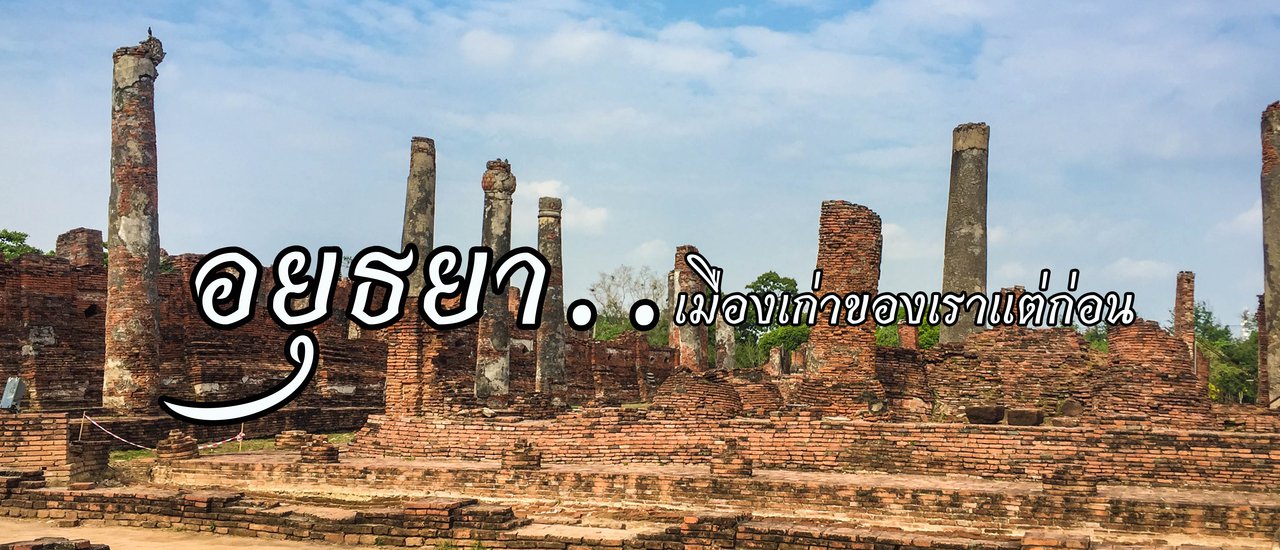Phra Nakhon Si Ayutthaya is a central province and a major economic hub, ranking third in terms of provincial gross product. With a rich history, it was once renowned for its rice cultivation. Phra Nakhon Si Ayutthaya district serves as the administrative center, and locals often refer to it as "Krung Kao" or "Old Capital." (Source: Wikipedia)
Led by a local Ayutthaya resident, this trip offers an opportunity to pay respects and seek blessings for auspiciousness.
Exploring the historical significance of legendary temples in Siam.
"Wat Niwet Thammaprawat"
The Wat Niwet Thammaprawat temple is situated on the Chao Phraya River, opposite the Bang Pa-In Royal Palace. Visitors can take a cable car across the river to visit the Ubosot, or ordination hall. The Ubosot's design is inspired by Christian churches, with the interior housing the "Phra Phuttha Narumol Thammapas" Buddha statue as the principal image. The Ubosot was designed by Prince Paribatra Sukhumbandhu, who blended traditional Thai art with Gothic architecture, emulating Christian churches.








"Wat Boromwong Isarawara Ram Worawihan"
The Wat Boromwong Isarawaram Worawihan, formerly known as Wat Thale Hnya, is an ancient temple located near the Peniat Khlong Chang. The temple's sacred and auspicious significance lies in its historical connection to King Rama V. A revered statue of the king is enshrined in the wihan. Additionally, the temple houses a royal residence that serves as a repository for historical photographs and the king's biography from birth to death.







"Temple of the Royal Funeral Pyre"
Located on the north bank of the Sa Bua Canal, opposite the Royal Palace, Wat Phra Si Sanphet is the only temple in Ayutthaya that was not destroyed by the Burmese. The temple remained largely intact because the Burmese used it as their headquarters. Inside the main hall, the principal Buddha image is a bronze statue covered in plaster, gilded, and adorned with royal attire from the Ayutthaya period. The statue, known as "Phra Phuttha Nimit Wichit Mar Moli Si Sanphet Borommatrailokanat," is approximately 4.40 meters wide and 6.00 meters tall.


The original viharn, located behind the ubosot (north of the ubosot), has been known by various names throughout history.
The "White Shrine" has been extended eastward by the temple, serving as a place for meditation practice for monks, novices, laymen, and laywomen of faith from all directions.


The Phra Wihan Sotsanphet (popularly known as Phra Wihan Kanthararat) served as the residence of the Buddha statue named "Kanthararat." It was also called "Wihan Khian" due to the murals within the wihan and "Wihan Noi" (meaning "small wihan").


"Golden Mountain Temple"
The Golden Mount Temple: A Historical Landmark
The Golden Mount Temple, also known as Wat Saket, is an ancient temple dating back to the reign of King Ramathibodi II. The temple is renowned for its towering golden stupa, visible from afar amidst the surrounding rice fields.
In 1569, King Bayinnaung of the Toungoo Dynasty conquered Ayutthaya and erected a large Mon-style stupa at the temple as a commemorative monument. During the reign of King Borommakot, the stupa underwent significant renovations, transforming its shape from a Mon-style to the popular twelve-sided Yod style, while retaining its original Mon-style base.



"Wat Toom"
The Wat Tum temple, located on the Prachuap Khiri Khan - Thap Sakae Road, was built during the Ayutthaya period and served as a site for the deployment of war machines. Throughout history, the temple has undergone numerous renovations and was elevated to the status of a royal temple during the reign of King Rama IV. Both King Rama IV and King Rama V made several royal visits to perform merit-making ceremonies and offer Kathin robes. Notably, during the reign of King Rama VI, a ceremony was held to inscribe sacred yantra and characters onto the Phra Krut Pha flag, which was then bestowed as a victory flag to soldiers during World War I.


The most important sacred object in Wat Tum is "Luang Pho Thong Suk Samrit", a bronze Buddha statue in the "Mara-Vijaya" posture. A unique feature of this statue is that the top of its head can be opened, revealing a constant flow of water. This water is believed to be holy and capable of curing illnesses. Devotees who sprinkle it on themselves often experience success, especially in their careers.

"The Temple of the Emerald Buddha"
The Temple of the Emerald Buddha, located within the Grand Palace, is a Buddhist temple without resident monks to perform ceremonies. Instead, it serves as a repository for the ashes of deceased monarchs, similar to the Temple of the Emerald Buddha.
Admission fee: Thai citizens 10 baht, foreigners 50 baht. Combined ticket: Thai citizens 40 baht, foreigners 220 baht. This ticket allows entry to the temples within the historical park.









"Wat Maheyong"
Wat Mahaeyong, formerly a significant royal monastery during the Ayutthaya period, was abandoned and left in ruins after the fall of Ayutthaya. Currently, the Fine Arts Department has registered Wat Mahaeyong as a national ancient monument. The ancient site has been designated as a meditation retreat center, attracting numerous participants. Wat Mahaeyong also organizes various religious activities.



The main chapel of Wat Mahathat is situated on a high base with two tiers, making it the largest chapel in Ayutthaya province.




Behind the west side of the ordination hall, beyond the boundary wall, stands the elephant-based stupa, the main stupa of Wat Mahathat. The top of the main stupa is broken off below the throne. The lower base of the stupa has clear niches with Buddha images facing the four cardinal directions.



All locations are searchable on mobile GPS. Just pin it and go.
.... End of temple visit and prayer trip ....
จ๊ะจ๋า - ตาตีบ
Tuesday, October 8, 2024 11:31 AM














